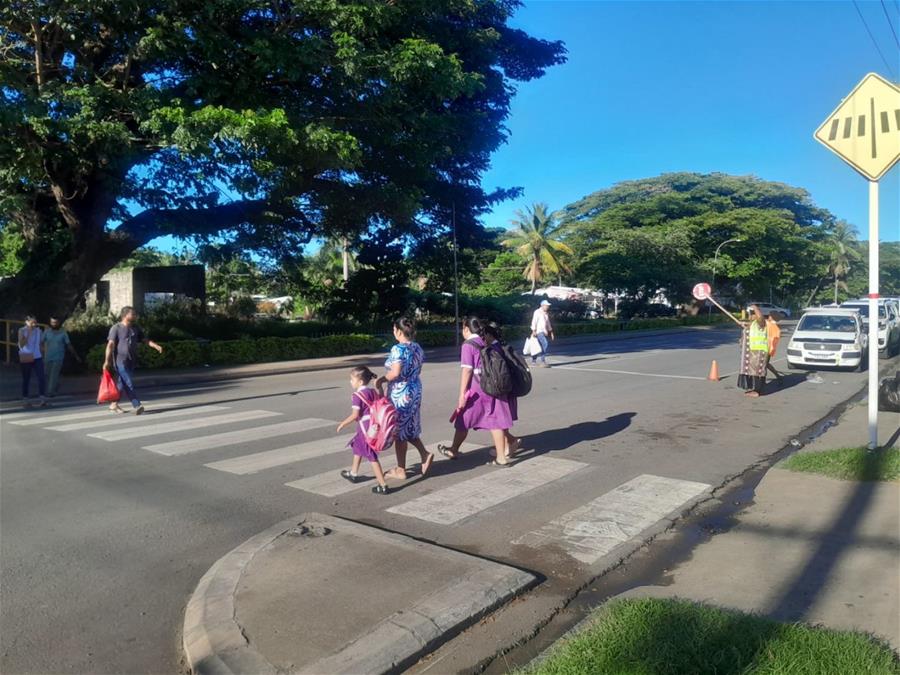SUVA, Fiji (28th May 2025): The Land Transport Authority (LTA) is urging all drivers to exercise heightened caution and responsibility when approaching school zones, following an incident in Rakiraki where two students were injured after being struck by a vehicle near the Penang Sangam School crossing.
The students, who were allegedly hit by a vehicle driven by a 70-year-old man, are currently receiving treatment at Rakiraki Hospital.
LTA Chief Executive Officer Irimaia Rokosawa says school zones were designed to safeguard students during their commute, but the system works only when drivers respect speed limits, stop for pedestrians and students, and remain alert.
Under the Land Transport Act 1998 (Regulation 61), no person shall drive a motor vehicle faster than 40 km/h within 50 meters of a school crossing when it is in operation.
“Children can be unpredictable — they may step on to the road suddenly or walk without warning. This is why reduced speed limits and heightened caution are legally required in these areas,” Mr Rokosawa said.
“We do not want to see a day when a child fails to return home because of a preventable road incident. Every time we drive, we are responsible not only for ourselves but for the lives of others—especially children.”
Mr Rokosawa said the unfortunate incident in Rakiraki highlighted the critical need for drivers to prioritize safety and follow all road rules, particularly in areas frequented by children.
The CEO said it was deeply concerning that children, who were using the pedestrian crossing, were injured due to a driver’s lack of attention or failure to slow down.
“This should serve as a wake-up call to every driver in Fiji. There is no excuse for negligence near school zones. The safety of our children must come first—every time, without exception,” Mr Rokosawa said.
“School zones are specially designated areas with strict speed limits and safety regulations in place to protect students. Compliance with these rules is not optional but a legal obligation for all drivers.
“Children are among the most vulnerable road users. They are still learning how to navigate traffic and may act unpredictably. That’s why it is absolutely crucial that drivers reduce speed, stay alert, and prepare to stop when approaching school crossings.”
Despite continuous awareness campaigns on road safety, Mr Rokosawa said some drivers still failed to take school zone safety seriously — putting innocent lives at risk.
He said ongoing efforts to promote road safety compliance and adherence to traffic regulations were being conducted by the Authority’s road safety and education teams alongside enforcement officers across the Central-Eastern, Western and Northern Divisions.
“The safety of our children is not just an LTA concern—it is a national responsibility. Each driver must take ownership of their behaviour behind the wheel. It only takes one moment of carelessness to cause lifelong harm,” the CEO highlighted.
He also called on parents, teachers and guardians to play an active role in ensuring their child’s safety near crossings and roadsides.
“Road safety is everyone’s responsibility—parents, drivers, teachers, and all motorists alike. We must ensure that school zones remain safe spaces for every child,” Mr Rokosawa said.
